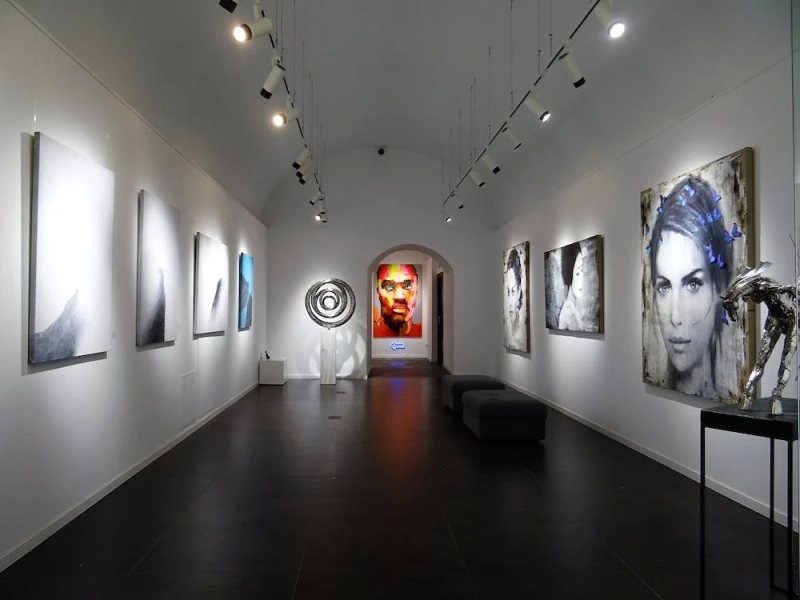Painters and artists do not just copy and recreate what they see. No matter what model or circumstance an artist is given, what resources are available to them, or how they are working, an experienced one knows how to produce a good artwork. Of course, this frequently follows years of experience, experimentation, and the emergence of a distinctive artistic voice. But there are some fundamental traits that all excellent paintings have. It is crucial that you understand the distinction between good and bad art for this reason. You definitely do not want to invest your time and hard-earned money in a piece of art that is not as precious as you first thought.
An artwork is regarded as being of high quality if it engages the viewer's emotions and conveys a compelling story. Technically speaking, a drawing is good when perspective, proportions, anatomy, light and shadow, and composition are used skillfully. However, you must remember that art quality is typically a matter of opinion. Art is difficult to evaluate fairly. What one individual finds incredible may be their greatest nightmare. It all comes down to personal preference and what one particular person thinks is a good artwork.
For instance, an individual may enjoy realistic drawings and be amazed by photorealistic pencil portraits, while another may favor more abstract paintings that to someone else just look like random blobs of color. Thus, you have to understand the general, but notable elements of a good artwork. It is critical to understand what constitutes a good art and how to recognize a quality one when you first look at them.
In the end, a painting's success depends on how well its composition, color scheme, and subject matter all work together to create a coherent and expertly crafted piece of art. Also, a successful painting often consists of a few key components. Continue reading to learn more.
The Amount of Details
Generally, using the right amount of details can improve the appearance of a drawing. Essentially, details give the eye something to look at. When compared to a design that is solely composed of big, straightforward shapes, meticulously constructed drawings with lots of details are frequently considerably more appealing to look at. There is simply much to consider. You must be careful, though. Adding excessive details could strain the viewer's eyes. Additionally, it is important to strike the correct balance between intricate and less intricate portions. Concentrate on the parts of your artwork that you want the viewer to focus on the most.
A Strong Focal Point
A focal point differs from the big, visible "X" that designates the location on a treasure map. Any size and shape is possible for it, and it has the potential to be both bold and delicate. Any of these elements—a dappling of light, a burst of color, an expression, or an assertive gesture—can serve as the composition's main point of interest. It should engage the spectator or serve as the climax of the momentum established in the piece, regardless of how it is made.
Layers of Color
Color is an important consideration when it comes to the notable elements of a good artwork. The use of color in a painting can make it serene or vibrant, dramatic or harsh. This results from your choice of colors as well as the way you layer or place adjacent color passages. More than any single swath of color, regardless of how well it matches the sky above, warm and cold colors in a sky impart a sense of atmosphere and distance.
The effective use of color will make or break your work if you choose to create something colorful rather than a black-and-white artwork. The world's finest artworks actually have some of the most incredible color choices. Complementary hues blend easily and are frequently used as the foundation for the colors in a drawing. Additionally, it can take years to perfect the proper use of color harmony and contrast, but once mastered, it can lead to remarkable outcomes.
How Light and Shadow are Used
The quality of your artwork can be greatly influenced by light and shadow. A sketch or painting can often stick out and seem intriguing just by the way the lighting is set up. Lighting also contributes to the atmosphere. You may evoke a particular mood in a painting much like you can in a movie, where every shot is meticulously planned and no light source is put at random.
Additionally, using light and shadow effectively gives your artwork a more three-dimensional appearance, which makes it appear more natural and credible.
Realism
The level of realism is another characteristic of excellent art. The correct use of light, shadow, and colors determines whether or not a piece of art appears realistic. You must attempt to accurately reproduce the way light and shadow function, as well as the colors it produces on paper, since light, color, and human eyes all adhere to the laws of physics. You can almost approach photorealism in a drawing if you do it correctly.
Even while many seasoned artists dislike simple realistic drawings, it may still be a remarkable accomplishment to depict something so convincingly, and it demonstrates excellent craftsmanship. Even just that can result in astounding works of art.
Key Takeaway
It is actually challenging to pinpoint exactly what constitutes good artwork, but the traits and distinguishing features listed here are undoubtedly a place to start. Of course, they are still somewhat arbitrary from anyone's perspective. Additionally, constantly consider why you are drawn to certain pieces of art. Also, have those qualities in mind as you create your own works.


